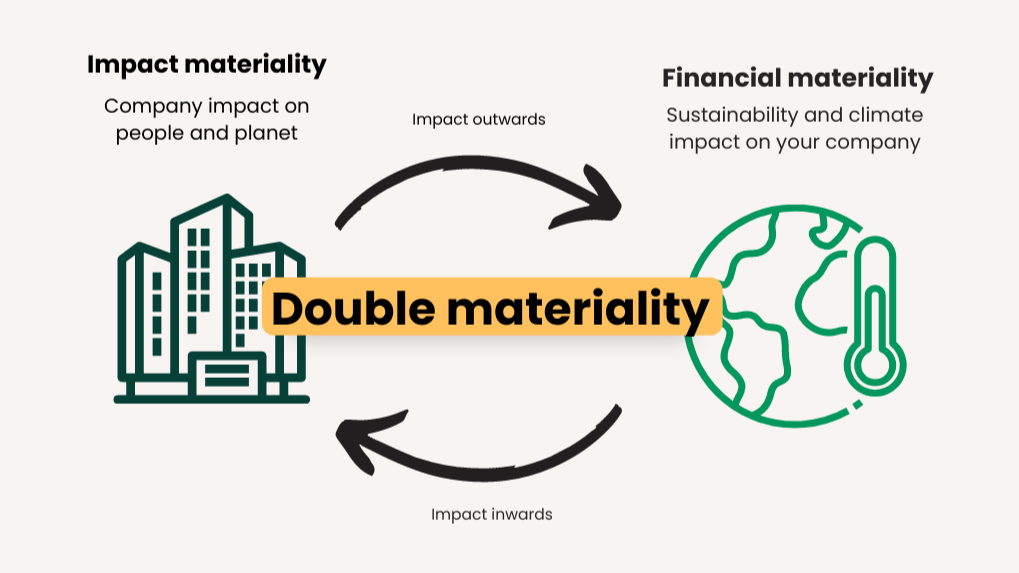Effective from May 30, 2025, Federal Decree-Law No. 11 of 2024 on the Reduction of the Effects of Climate Change will fundamentally change how every business, government entity, and organization in the UAE thinks about and manages their carbon footprint.
Why the UAE Is Leading the Climate Charge in the Middle East
The UAE’s Net Zero by 2050 Strategic Initiative, launched in 2021, committed the country to achieving carbon neutrality within three decades, the first Middle Eastern nation to make such a pledge. The new climate law is the regulatory backbone that will make this ambitious goal achievable. The UAE currently emits approximately 200 million tonnes of CO₂ equivalent annually, making it one of the highest per-capita emitters globally. This law represents the most comprehensive effort yet to systematically reduce those emissions across every sector of the economy.
Understanding the Scope, Who’s Really Affected?
This law casts a wide net that captures virtually every economic actor in the UAE!
- Large Corporations – Any company with annual revenues exceeding AED 100 million
- SMEs – Small and medium enterprises meeting specific emissions thresholds
- Free Zone Companies – Including those in Dubai International Financial Centre (DIFC), Abu Dhabi Global Market (ADGM), and dozens of other free zones
- Foreign Subsidiaries – International companies with UAE operations
The “Major Emitter” Classification
Here’s where things get serious. Any entity public or private emitting 500,000 tonnes of CO₂ equivalent or more annually is classified as a “Major Emitter.” Based on current data. Major emitters face the most stringent requirements, including mandatory third-party verification of emissions data and legally binding reduction targets.
Breaking Down the Core Requirements
1. The GHG Inventory
Think of this as your company’s carbon balance sheet. Every entity must develop a comprehensive greenhouse gas inventory that captures,
Scope 1 Emissions
- Fuel combustion in company vehicles and equipment
- On-site energy generation
- Industrial processes and manufacturing
- Fugitive emissions from equipment leaks
Scope 2 Emissions
- Electricity consumption from the grid
- Purchased steam, heating, or cooling
- Energy used in rented facilities
Scope 3 Emissions
- Business travel and employee commuting
- Purchased goods and services
- Transportation and distribution
- Waste generated in operations
- Use of sold products
The UAE’s approach aligns with the globally recognized Greenhouse Gas Protocol Corporate Accounting and Reporting Standard, ensuring international compatibility.
2. The MRV System (Measurement, Reporting, and Verification)
This is where the rubber meets the road. Every entity must implement a robust MRV system that includes,
Measurement Protocols
- Use of UAE approved emission factors and methodologies
- Alignment with IPCC guidelines and international standards (ISO 14064-1, ISO 14067)
- Regular calibration of monitoring equipment
- Data quality assurance procedures
Reporting Requirements
- Quarterly internal reporting for major emitters
- Annual submissions to the National Carbon Registry
- Public disclosure for publicly traded companies
- Integration with existing sustainability reporting frameworks (GRI, SASB, TCFD,Etc)
Verification Standards
- Mandatory third-party verification for major emitters
- Accredited verification bodies approved by MOCCAE
- Independent assurance following international standards (ISO 14064-3)
3. The National Carbon Registry
By June 28, 2025, all entities must submit their baseline emissions data to the newly established National Carbon Registry. This digital platform, developed in partnership with international technology providers, will serve as.
- The official database for all UAE emissions data
- A platform for tracking progress toward national climate goals
- A resource for policy development and climate finance
- A transparency tool for stakeholders and investors
Early access to the registry starts in March 2025, with training sessions and technical support available through MOCCAE and the Emirates Green Development Council.
4. Annual Climate Disclosure
The annual reporting requirement goes far beyond simple emissions accounting. Companies must provide,
Comprehensive Emissions Reporting
- Yearly emissions trends and analysis
- Breakdown by business unit, facility, and activity
- Intensity metrics
Mitigation Efforts Documentation
- Energy efficiency projects and their impact
- Renewable energy adoption and procurement
- Process improvements and technology upgrades
- Employee engagement and behavior change programs
Progress Tracking
- Performance against reduction targets
- Key performance indicators and milestones
- Investment in clean technologies and infrastructure
- Challenges encountered and lessons learned
5. Climate Risk Assessment and Adaptation
The UAE’s geography and climate make it particularly vulnerable to climate impacts. The law requires comprehensive risk assessments covering,
Physical Risks
- Extreme heat events and their impact on operations
- Water scarcity and supply chain vulnerabilities
- Sea level rise affecting coastal facilities
- Increased frequency of dust storms
Transition Risks
- Policy changes and regulatory evolution
- Market shifts toward low-carbon alternatives
- Technology disruption and stranded assets
- Reputation and liability concerns
Adaptation Planning
- Infrastructure resilience improvements
- Supply chain diversification strategies
- Emergency response and business continuity plans
- Investment in climate-resilient technologies
6. Climate Governance
The law encourages and for major emitters, effectively requires strong internal governance structures,
Climate Leadership Roles
- Designated Chief Sustainability Officers or equivalent positions
- Cross functional climate committees
- Integration with existing risk management frameworks
Board Oversight
- Regular board reporting on climate performance
- Integration of climate risks into strategic planning
- Oversight of climate related investments and initiatives
- Accountability for meeting reduction targets
7. Penalties
The UAE government has made it clear that this law has teeth. Non compliance can result in,
Financial Penalties
- Fines ranging from AED 50,000 to AED 1 Mn, depending on the severity & entity size
- Daily penalties for ongoing non-compliance
- Cost recovery for government enforcement actions
Operational Consequences
- Suspension of business licenses and permits
- Exclusion from government contracts and tenders
- Restrictions on expansion or new project approvals
- Public disclosure of non-compliance status
Reputational Impact
- Publication of violators in official registries
- Impact on ESG ratings and sustainability indices
- Potential exclusion from sustainable finance products
- Stakeholder and customer trust erosion
The Ministry of Climate Change and Environment, working with local authorities, will conduct regular audits and inspections. The enforcement approach emphasizes education and support initially, but penalties will escalate quickly for deliberate non-compliance or repeated violations.
The Business Case
Smart business leaders are already seeing this law not as a regulatory headache, but as a competitive advantage. Here’s why,
Access to Capital and Finance
The global sustainable finance market exceeded $4 trillion in 2023, and it’s growing rapidly. UAE entities that demonstrate climate law compliance will have preferential access to:
- Green Bonds – The UAE green bond market is expected to reach $50 billion by 2030
- Sustainability Linked Loans – Financing terms tied to environmental performance improvements
- ESG Investment Funds – Access to the growing pool of environmentally conscious investors
- Development Finance – Preferential rates from institutions like the Islamic Development Bank and AFC
Supply Chain Advantages
Major global companies are increasingly requiring carbon transparency from their suppliers. UAE exporters who can demonstrate compliance will be better positioned to,
- Maintain relationships with international buyers implementing Scope 3 reporting
- Access premium markets in Europe and North America
- Participate in emerging carbon border adjustment mechanisms
- Command price premiums for verified low-carbon products
Innovation and Efficiency Gains
Companies that embrace the law’s requirements often discover significant operational benefits:
- Energy Cost Reductions – Systematic emissions monitoring typically reveals 10-30% energy savings opportunities
- Process Optimizations – Detailed tracking often uncovers inefficiencies and waste
- Technology Adoption – Compliance creates business cases for clean technology investments
- Employee Engagement – Sustainability initiatives boost staff morale and retention
Market Positioning
Early adopters gain significant reputational advantages,
- Enhanced brand value and customer loyalty
- Improved relationships with investors and lenders
- Better positioning for government contracts and incentives
- Leadership recognition in sustainability rankings and awards
The Implementation Timeline
Phase 1 – Preparation (Now – May 2025)
- Conduct baseline emissions assessments
- Establish internal MRV systems and procedures
- Train staff and build internal capacity
- Engage with third-party verification providers
Phase 2 – Initial Compliance (May – December 2025)
- Submit baseline data to National Carbon Registry
- Begin regular emissions monitoring and reporting
- Implement initial reduction measures
- Establish governance structures and procedures
Phase 3 – Optimization (2026 and Beyond)
- Refine measurement and reporting systems
- Accelerate reduction efforts and technology adoption
- Integrate with broader sustainability strategies
- Pursue additional certifications and recognitions
Your Action Plan – Getting Started Today
The most successful organizations will be those that start preparing now, not those that wait until the deadline approaches. Here’s your roadmap,
Immediate Actions (Next 30 Days)
- Conduct a Preliminary Assessment – Estimate your current emissions footprint using available data
- Identify Key Stakeholders – Engage leadership, operations, finance, and legal teams
- Review Existing Systems – Assess current environmental management and reporting capabilities
- Research Service Providers – Identify potential consultants, auditors, and technology vendors
Short-Term Priorities (Next 3-6 Months)
- Develop Detailed Emissions Inventory – Conduct comprehensive baseline assessment
- Design MRV Systems – Establish procedures for ongoing measurement and reporting
- Build Internal Capabilities – Train staff and establish governance structures
- Set Preliminary Targets: – Develop initial reduction goals and timelines
Long-Term Strategy (6-12 Months)
- Implement Technology Solutions – Deploy monitoring equipment and software systems
- Launch Reduction Initiatives – Begin energy efficiency and clean technology projects
- Engage Supply Chain – Work with suppliers and partners on emissions reduction
- Prepare for Verification – Establish relationships with accredited verification bodies
Why This Changes Everything!
The UAE Climate Law is not just environmental regulation, It marks a bold economic transformation aimed at positioning the nation as a global leader in sustainable business and green finance. For businesses, this is a pivotal moment, those that embrace the law as a strategic opportunity rather than a compliance burden will gain a competitive edge through innovation and efficiency.





We didn’t invent the term “fools with tools.” Still, it’s a perfect definition for the practice of buying a stack of sophisticated cybersecurity technology that’s impossible to manage without an MSP or the budget of a Fortune 500 IT department.